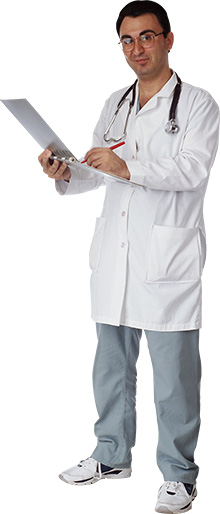- Definition of the disease, its symptoms
- What happens at this moment
- Varieties of States
- Allergy Tests
- Impact methods
To deal with how to deal with allergies, you need to thoroughly examine its features. In this case, it refers to its causes, symptoms and varieties.
Definition of the disease, its symptoms
Allergy is an increased sensitivity of an organism to a specific substance, therefore it is extremely important for every person to understand how to recognize an allergy. First of all, remember how it can be caused:
To date, it has been established that acute allergies can be caused by substances that are formed inside the body. In medicine, they are called endoallergens. By origin they can be:
- natural - in the form of proteins of unchanged tissues, which were isolated from the system responsible for immunity;
- Acquired - proteins that under the influence of thermal, chemical, radiation, bacterial, viral factors quickly adopt alien properties.
We note separately that allergy is considered a "disease of the century", because at this point in time, its species suffer 85% of the total population of the planet. If you have become one of them, then surely you will be interested to learn how to deal with allergies. 
How to deal with allergies? First, you need to understand what are its symptoms. So, allergy symptoms are different, they depend on the form of the disease. In medical practice, there are many disease states that are characterized by similar by signs . Perhaps in order to understand what causes the symptoms, definitely need to test for allergies.
So, allergies can manifest themselves in several ways and rather quickly. First, a local reaction appears in the form of redness. It can also be a swelling that appears at the site of the injection or insect bite. Also allergy symptoms dermatosis , pollinosis, bronchospasm, sore throat, non-analytical prognosis. All of them can be caused by allergies, even if it is mild. The above symptoms belong to the group of immediate type allergic reactions that occur in the first few hours.
There are also delayed allergies, the symptoms of which appear after some time. These include:
Common symptoms of any allergy include feeling unwell, general malaise, headaches, chills, nausea and vomiting, shortness of breath, dizziness, as well as skin redness and itching, as shown in the picture. All these unpleasant sensations can be caused by agents of a protein / non-protein nature, which are called allergens.
What happens at this moment
Want to figure out how to cope with allergies, first understand the principle of its action. Nature has laid down that nerve impulses are transmitted through organisms through mediators (special substances). One of them is histamine, it is he who is involved in metabolism, as well as reactions.
There is relatively little free histamine in the whole organism, but in action it is quite diverse and is capable of embracing various processes and functions in nature. Disruption of histamine metabolism and causes painful reactions. This occurs when, in conditions of complex processes in the body, not involved histamine enters the blood. This fact can be confirmed by means of such a procedure as an allergy test.
Varieties of States
In medicine, there is a certain classification of the manifestations of allergies. To some extent, the symptoms of allergy also depend on the type of disease. In order to accurately determine the disease, samples are taken for allergies.
So, consider several options, what is allergy and how effective allergy prevention . Contact allergy - a disease like eczema, manifested during the direct contact of the skin with substances of the delayed type. There are a lot of them, but there are a few of the most basic groups: 
- plant allergens;
- metals ;
- cosmetics, perfumery;
- paints;
- formalin;
- polymers of natural and artificial origin.
Again, if you are interested in how to understand what an allergy is, then the best way to do this is by manipulation, called allergy testing. False allergy - the concept implies a pathological process, which in its clinical manifestations is very similar to the allergic one. A distinctive feature of the process is the lack of an immunological stage of development, which is confirmed by tests for allergies.
Although the false allergy does not have the first stages , it includes the following two: the release of mediators and clinical manifestations. In this case, as in the rest, a special test for allergies is needed.
Most often, false allergy occurs in conditions of drug or food intolerance. By the way, the false reaction is much more common, it is about 70% of cases. Allergy symptoms differ among themselves both in form, location, and severity. In this case, it is especially important to know how to defeat an allergy, because its non-treatment can cause vegetative-vascular crises of hypotonic and hypertonic nature.
Addition. The classification of allergies allows you to separate the painful conditions by different indicators. Allergy testing helps to get more accurate results, the picture below shows how to carry it out.
Cross-allergy is a condition in which the signs of an allergy are multiplied by two. What does it mean? And the fact that a similar reaction is caused not only by the main allergen, but also by its twin, similar in a set of amino acids. As it becomes clear, the peculiarity of the painful condition called cross-allergy, the type of which allows only tests for allergies to be determined, is the organism’s hypersensitivity not to a single allergen, but to the whole group. Cross-allergy is characterized by the same malaise as usual: 
- rhinitis;
- lacrimation;
- itching and burning on the skin;
- swelling of the mucous membranes;
- bronchial asthma, etc.
Sometimes to avoid all these feelings helps vaccination against allergies. In this case, the prevention of allergies involves the rejection of walks in squares and gardens, if the main allergen is plant pollen. It is also important to wear sunglasses and even a gauze bandage. Such prevention of allergies allows you to maximize the protection of mucous membranes, if you have a cross-allergy or other form of this condition.
Allergy Tests
After considering the classification of allergies, you can move on to the next question of how to determine what allergy is? Below will be given a detailed answer. In order to identify the cause, special allergy tests are conducted. This is the first step towards solving the question of "how to beat allergies."
Any reaction is an immune response from the body under the conditions of penetration into it of the pathogen, as a result of damaged tissues and cells. 
It should be forever remembered that this disease is very dangerous for a person, because it often has unintended consequences. Therefore, measures such as testing for allergies, treatment and prevention of allergies should be taken seriously.
How to find out what allergies? Today there are several ways, in the first place a blood test. This allows you to determine if there are antibodies to a specific provocateur. Informative is the method of testing for allergies. They are carried out as follows: some pathogen substances are applied to the damaged part of the body. The reaction occurs in 30-40 minutes. There are specific contraindications in which the test for allergies can not be carried out. This applies to children less than 4 years of age and adults over 65 years of age, as well as those patients who have an acute phase of development, extensive changes in the skin.
To date, the highest quality are samples for allergies, through which specific IgE antibodies are detected. With the rapid development of the reaction their level increases significantly. Summarizing, we can distinguish several basic analyzes that are necessary for the survey:
- food intolerance analysis;
- screening inhaled allergens;
- Allergy testing for class E immunoglobulins;
- Allergy test to determine the amount of specific IgE type antibodies.
You can clearly see how this happens in the picture.
Impact methods 
After the tests for allergies are done, you can proceed to the question of how to deal with allergies. First of all, you need to eliminate contact with allergens, it depends on how much further therapy will be effective. The use of drugs is necessary in order to completely / partially eliminate the symptoms, as well as reduce the risk of its re-development.
Regardless of what the result of the allergy test was, these tools are mainly used:
- antihistamines - Loratadin, Telfast, Zirtek, Suprastin, Tavegil. All of these drugs are in the first group of antiallergic drugs and are prescribed primarily;
- decongestants - eliminate nasal congestion problems (Pseudoephedrine, Oxymetazoline);
- leukotriene inhibitors - chemical compounds that block reactions caused by leukotrienes;
- steroid sprays - hormonal drugs reduce inflammation in the nasal passages (Beclomethasone, Flukatizon, Mometasone).
Everyone understands that the test for allergies is impossible without the participation of a doctor, the same applies to treatment. But it is best to take care of yourself in advance, by resorting to the surest way to avoid trouble, called allergy prevention. To do this, you must avoid direct contact with allergens, as far as possible to control the symptoms and take timely action. If you are careful about your health, then perhaps a test for allergies you will never need.
How to deal with allergies?What does it mean?
How to find out what allergies?



